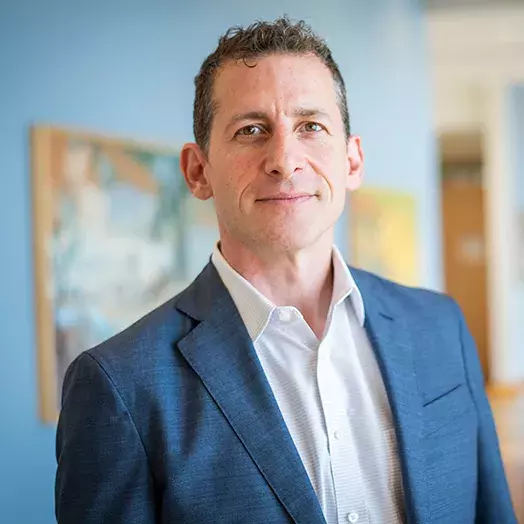Professor Paul Ferraro explains why the lack controlled trials to evaluate the effectiveness of conservation initiatives may be doing more harm than good.

To protect endangered species, incentives in conservation science must change
On the face of it, the conservation program among fishing vessels in five Indonesian villages — where hammerhead sharks and rays (called wedgefish) are critically endangered species — might have seemed a success. The program offered a financial incentive for the vessels to release any of these endangered fish that they caught, mostly inadvertently.
A conventional approach to measuring the program’s impact implied that the incentives reduced wedgefish mortality by 71% and hammerhead mortality by 4%, notes economist Paul Ferraro, Bloomberg Distinguished Professor at Johns Hopkins Carey Business School.
But that approach, which only measured the number of live fish releases by incentivized vessels, did not capture the full picture. Unlike other environmental programs, the Indonesian incentive program was implemented as a randomized controlled trial, which allowed researchers to compare catches in incentivized and unincentivized vessels.
The trial data showed the program was actually backfiring.
“The experimental data imply that the pay-to-release program induced some vessels to increase their catch, thereby decreasing wedgefish mortality by only 25% and increasing hammerhead mortality by 44%,” notes Ferraro, in a recent report published in Science Advances. The trial was led by Hollie Booth of Oxford University, who turned to Ferraro for help in analyzing the study’s data.
To Ferraro, the lessons learned go well beyond this single study and point to a larger problem within conservation science: the widespread lack of evidence-based studies. “Pay-to-release schemes for endangered species caught by local fishers are being implemented around the world, yet these schemes tend to be implemented without anyone asking whether they actually make a difference to the catch of endangered species,” he says.
“It’s 2025, and this is the only controlled [marine conservation] trial that’s been done that we know of,” Ferraro adds. “A trial like this shouldn’t be unusual. We need to change the incentives in conservation science so that many projects are doing trials like this one.”
Increasing the catch for more cash
In the study, researchers recruited 77 boats from five villages over a period stretching from May 2022 to August 2023. Some were offered payments for each shark or ray released alive (captured by video) while others served as the control group, fishing as usual. In addition to analyzing the video releases, researchers recorded the number of dead endangered sharks and rays on the boats when they returned to shore (a proxy for mortality).
In comparing the two groups, the team found that the endangered fish fared much more poorly among incentivized fishers than would have been captured by a project without a control group, with 44% more hammerheads dead on the boats that received payments.
Booth posits that those in the incentive program opted to catch more fish than usual and then release them, since the catch-and-release payments were guaranteed, while the amount of money they could get at market carried the risk of fish going unsold.
Accounting for complicating factors
Ferraro, who holds a joint appointment in environmental engineering with the Whiting School of Engineering and the Bloomberg School of Public Health, has focused his research on building an evidence base about the environmental and social impacts of public and private programs. As such, he’s been banging the drum for two decades about the importance of using an experimental model to test the impact of environmental programs.
“In medicine, the norm has long been to conduct controlled trials, but that hasn’t been the case in social science fields — and particularly in conservation science and protection of endangered species,” says Ferraro. He blames the lack of evidence-based studies on existing incentives.
“Funders of these projects don’t reward researchers for gathering high-quality evidence; they reward them for ‘success’ — ‘wow’ results that are gamechangers,” he says. “So, there is no incentive for conservation scientists to test their ideas carefully.”
But such testing is crucial, Ferraro and his collaborators note in their paper, due to the complexity of designing incentive-based conservation programs.
Among the complicating factors: Some participants are already engaging in the desired behaviors, and so payments will go to those who would have undertaken the actions without payment; other participants may engage in undesired behaviors to secure more payments (as in the case of the Indonesian fishers); other participants may use the payments to purchase additional equipment, such as larger fishing nets, which can lead to more damage in the long run; and some participants may reduce exploitation of the target species in a way that increases the damage to a nontarget species (changing gear to protect species A, for example, can adversely impact species B).
A well-designed study would be able to detect these complicating factors and quantify how they interact and amplify each other, says Ferraro.
What to Read Next

business of health
Healthier cities are key to a healthier planet and healthier people‘Test, learn, adapt’
Ferraro praises Booth and her team for taking an evidence-based approach. “The researchers who conducted this trial were very brave,” he says.
As a result of their findings, the Oxford researchers, who have been working with a local nongovernmental organization, Kebersamaan Untuk Lautan, have capped compensation to fishers and the number of allowable compensated releases per vessel per week. And to reduce the number of wedgefish and hammerheads inadvertently caught in the first place, they’ve piloted traps that don’t catch the sharks or rays.
Ferraro applauds the “test, learn, adapt” model the Oxford team has employed, an approach that is the norm in the tech industry and one that he believes should be more widely adopted. “A culture of experimentation is essential for properly overseeing conservation programs,” he says.


